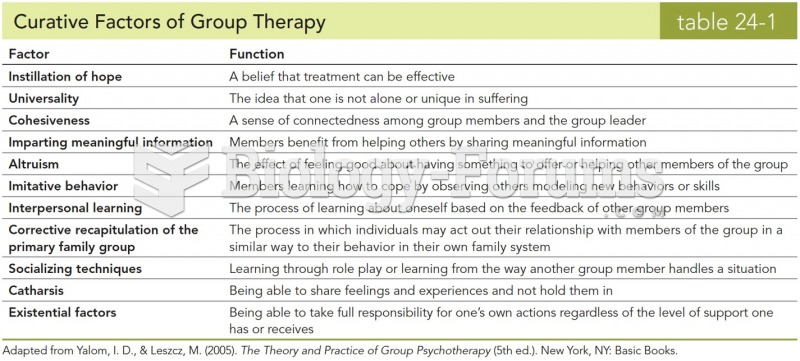Answer to Question 1
Correct Answer: 3
Rationale 1: While some older clients might have difficulty in using aids such as check-off calendars, for most they can be a valuable tool.
Rationale 2: If access to medications is limited because of cost, the nurse should help the client explore what support resources might be available.
Rationale 3: Daily or weekly pill counters are an effective, inexpensive way to promote adherence.
Rationale 4: While stopping medications that are ineffective might be appropriate, not all medications have benefits that are obvious, and medication changes should be discussed with other members of the health care team.
Global Rationale: Daily or weekly pill counters are an effective, inexpensive way to promote adherence. While some older clients might have difficulty in using aids such as check-off calendars, for most they can be a valuable tool. If access to medications is limited because of cost, the nurse should help the client explore what support resources might be available. While stopping medications that are ineffective might be appropriate, not all medications have benefits that are obvious, and medication changes should be discussed with other members of the health care team.
Answer to Question 2
Correct Answer: 1
Rationale 1: Pharmacodynamics deals with how a drug affects bodily systems.
Rationale 2: This is the definition of adherence, not pharmacodynamics.
Rationale 3: This is the definition of polypharmacy, not pharmacodynamics.
Rationale 4: This is the definition of pharmacokinetics, not pharmacodynamics.
Global Rationale: Pharmacodynamics deals with how a drug affects bodily systems. Adherence is complying with one's medication regimen, as prescribed. Polypharmacy is taking multiple medications. Pharmcokinetics is the mechanism by which the body handles the drug.







